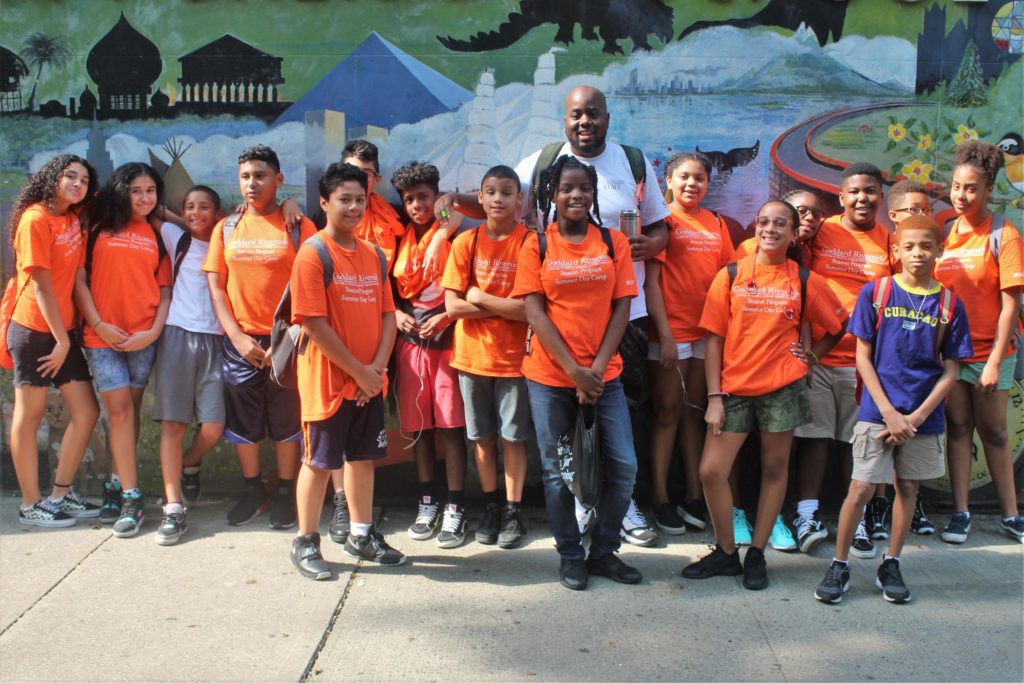
“Here we go!” said Amber Batchelor of Ladies Who Hoop, climbing a stepladder at at Sol Bloom Park on a hot sunny morning. With a big smile, she tore the protective plastic from the first of two new backboards at the 91st Street park. Minutes later, youth from Goddard Riverside’s Beacon Program were playing basketball on one court, while members of the community played on another.
The unveiling of the backboards formed the finale to Beacon’s summer service project, and it said a lot about what Beacon is: experiential, goal-oriented, deeply rooted in community—and fun.
“We try to offer as many innovative methods to engage young people as possible. They want to learn but they don’t always want to do it in a traditional academic way,” said Beacon director Michael Chapman with a laugh.
“Community is an important part of that,” he added. “The ideal Beacon program has an invested community that’s involved.”
The Beacon concept was launched in 1991 by then-mayor David Dinkins. Each Beacon pairs a community-based organization like Goddard Riverside with a local school to provide programs for children and adults in non-school hours. Essentially, each school becomes a miniature community center when classes are out.
The original ten Beacons have grown to 91, and the idea has spread to other cities around the country. It has been credited with reshaping the approach to youth services nationwide, informing the Clinton administration’s Community Schools model and Obama’s Promise Neighborhoods initiative.
Our Beacon, which is based at P.S. 333 Manhattan School For Children on West 93rd Street, begins each afternoon at 2:30 with a tutoring and social hour. That’s followed by a homework hour at 3:30. Club activities begin at 4:30 and include a wide array of options from a Business of Sports class to Singing and Songwriting, Tennis, Flag Football, STEP/Hip-Hop Dance, Coding, and financial literacy.
Youth and adult activities offered in the evenings include Teen Talk, Zumba, an English as a Second Language class, a drumming group for older adults, and Ladies Who Hoop.
Several of these programs are what’s called co-locators: they are managed by other organizations but offered in the same space as Beacon. Co-locators enable the Beacon to offer more variety and strengthen connections within the community.
For example, Ladies Who Hoop offers a women’s basketball league and open gym.
“It started from a love of basketball,” said Batchelor, who founded Ladies Who Hoop in 2015 with some friends. “We provide programs and services to women of all ages to empower them through basketball.”
Because of renovations at P.S. 333, the Beacon will be taking its show on the road this fall. While the afternoon programming will remain at the school, half of the evening programs will be a the Goddard Riverside Bernie Wohl Center and the other half will be at Louis D. Brandeis High School on West 84th St.
Saturday programming, including basketball or soccer and two youth sections focused on the Business of Sports and financial literacy, will continue at P.S. 333.
“You’re talking about great programming up and down the West Side!” said Chapman.